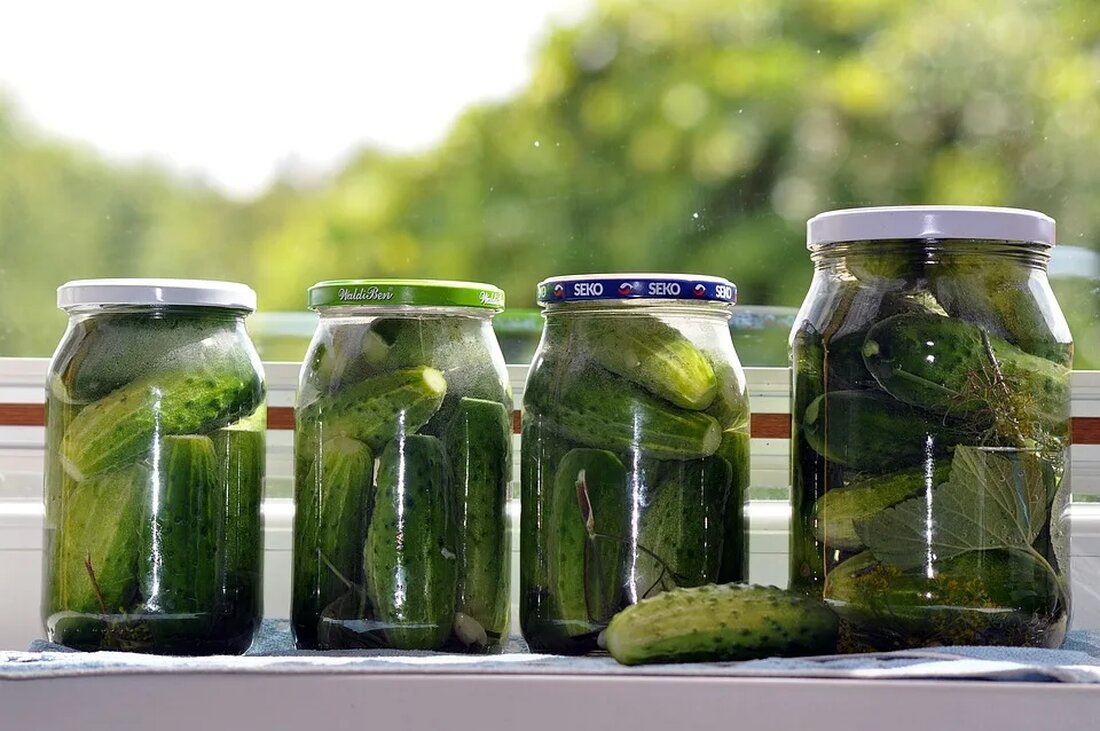Food Preservation: Natural Methods
Food Preservation: Natural Methods In a world where the food industry relies heavily on chemical preservatives and other synthetic methods to preserve food, more and more consumers are looking for natural alternatives. Food preservation is an important aspect of maintaining the freshness of food and preventing spoilage. Fortunately, there are a number of natural methods that have been used for centuries to make food last longer. In this article we will take a closer look at some of these methods. Table of Contents Fermentation Drying Salting Smoking Pickling in Vinegar Use of Sugar Cooling and Freezing Fermentation Fermentation is one of the oldest...

Food Preservation: Natural Methods
Food Preservation: Natural Methods
In a world where the food industry relies heavily on chemical preservatives and other synthetic methods to preserve food, more and more consumers are looking for natural alternatives. Food preservation is an important aspect of maintaining the freshness of food and preventing spoilage. Fortunately, there are a number of natural methods that have been used for centuries to make food last longer. In this article we will take a closer look at some of these methods.
Table of contents
- Fermentation
- Trocknung
- Salzen
- Räuchern
- Einlegen in Essig
- Verwendung von Zucker
- Kühlung und Gefrieren
fermentation
Fermentation is one of the oldest methods of food preservation. Here, food is fermented through the activity of microorganisms such as bacteria, yeast or mold. These microorganisms produce acids, alcohol or other substances that inhibit the growth of bacteria that cause spoilage.
A well-known example of fermented foods are sauerkraut and pickled cucumbers. Sauerkraut is made by fermenting chopped cabbage. The natural microorganisms present on the cabbage ferment the cabbage and turn it into sour cabbage. This acidic environment ensures that the sauerkraut lasts for a longer period of time.
drying
Drying is another food preservation method that has been used for centuries. This removes moisture from the food, which prevents the growth of microorganisms. Removing moisture also inactivates the enzymes in the food that can accelerate spoilage.
Various foods can be preserved by drying, such as fruits, vegetables, meat and fish. The traditional method of sun drying is now often supported by the use of dehydrators or ovens. Dry fruits like raisins or dried apricots are popular snacks and can also be used as ingredients in many recipes.
Salt
Salting has been a tried and tested method for food preservation of meat and fish for centuries. This involves covering the food with a layer of salt to remove excess moisture and inhibit the growth of microorganisms. The salt deprives the microorganisms of the water they need to survive, causing them to die.
The most famous example of salted food is bacon. The bacon is covered with a thick layer of salt to protect it from spoilage. The salt draws the moisture out of the bacon and also serves as a flavor enhancer.
Smoking
Smoking is a method in which food is hung over a smoldering wood fire, usually in a smoke chamber. The smoke contains various compounds that can inhibit the growth of microorganisms and slow down spoilage.
The use of smoke to preserve meat and fish has a long tradition in many cultures. Smoked sausages, smoked salmon and smoked hams are just a few examples of smoked foods. The smoke not only gives the food a characteristic aroma, but also extends its shelf life.
Pickling in vinegar
Pickling in vinegar is another natural method of food preservation. Vinegar is an acidic agent that inhibits the growth of microorganisms by lowering the pH, creating an unfavorable environment for them.
Foods such as cucumbers, onions and olives are traditionally pickled in vinegar to prevent them from spoiling and to give them flavor. Vinegar gives the pickled food a sour flavor and can serve as a base for sauces or dressings.
Use of sugar
The use of sugar to preserve food also has a long tradition. Sugar removes moisture from microorganisms and thereby inhibits their growth. The high sugar content creates an unfavorable environment for microorganisms in which they cannot survive.
Jams and jellies are classic examples of foods preserved using sugar. The high sugar content prevents the growth of microorganisms and increases the shelf life of these canned fruits.
Refrigeration and freezing
Refrigeration and freezing are modern methods of food preservation that we use today. Lowering the temperature slows or stops the growth of microorganisms, which extends the shelf life of food.
The use of refrigerators and freezers allows us to keep food fresh and store it for longer periods of time. Freezing stops the growth of microorganisms because the low temperatures inhibit their activity.
Conclusion
Natural food preservation offers a variety of methods to make food last longer. Fermentation, drying, salting, smoking, pickling, use of sugar, and cooling and freezing are proven techniques that have been used for many centuries. By relying on these natural food preservation methods, we can reduce the use of chemical preservatives while keeping our food fresh and tasty.
You can find out more about natural and healthy nutrition in our guide magazine Your-Heilpraktiker.com

 Suche
Suche
 Mein Konto
Mein Konto
